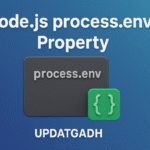
Understanding SQL Injection: A Major Web Security Threat
SQL Injection
Introduction
SQL Injection is a critical vulnerability that can lead to severe data breaches, unauthorized access, and even total control over a web application’s database. It is one of the most commonly exploited web hacking techniques where malicious SQL statements are injected into input fields, allowing attackers to manipulate the database.
In this article, we will explore SQL Injection, its types, impact, detection methods, and best practices to prevent it.
Complete Python Course with Advance topics:-Click Here
SQL Tutorial :-Click Here
What is SQL Injection?
SQL Injection (SQLi) is a code penetration technique where an attacker manipulates an application’s SQL query by injecting malicious SQL code. This vulnerability occurs when user input is improperly sanitized, allowing unauthorized access to sensitive data or even altering the database structure.
How SQL Injection Works
When a web application requires user input, such as a username or ID, the input is directly included in an SQL query without proper validation. This allows attackers to insert SQL code instead of expected input, leading to unintended database operations.
Example:
userInput = getRequestString("UserInput");
query = "SELECT * FROM customers WHERE customer_id = " + userInput;
If an attacker enters 100 OR 1=1, the query becomes:
SELECT * FROM customers WHERE customer_id = 100 OR 1=1;
Since 1=1 is always true, the query returns all records, exposing the entire database.
Types of SQL Injection Attacks
1. Retrieving Unauthorized Data
Attackers use SQL Injection to extract sensitive information such as user credentials, payment details, and personal information.
2. Modifying Database Content
Malicious SQL statements can update, insert, or delete records, modifying the application’s functionality.
3. Executing System Commands
Advanced SQLi techniques allow attackers to execute system-level commands, install malware, or control the server remotely.
4. Batch SQL Injection
Databases supporting multiple SQL statements allow attackers to execute multiple queries in a single request.
Example:
SELECT * FROM orders; DROP TABLE order_history;
This query fetches order details and then deletes the order history table.
Real-World Example of SQL Injection
Consider an employee database where users can view their records using an Employee ID. If an attacker enters:
12345 OR 1=1
The query becomes:
SELECT * FROM employees WHERE employee_id = 12345 OR 1=1;
Since 1=1 is always true, all employee records will be exposed.
Detecting SQL Injection Attacks
1. Web Application Firewall (WAF)
A WAF can detect and block basic SQL Injection attempts by analyzing incoming requests.
2. Intrusion Detection System (IDS)
- Network-based IDS: Monitors all traffic to the database and flags suspicious activities.
- Host-based IDS: Examines server logs and identifies anomalies.
Impact of SQL Injection Attacks
- Data theft: Attackers gain access to sensitive data, including usernames, passwords, and financial details.
- Loss of integrity: Attackers modify, delete, or corrupt critical business data.
- Unauthorized access: SQL Injection can be used to bypass authentication mechanisms and gain administrative access.
- System compromise: Attackers can execute system commands, leading to full server control.
How to Prevent SQL Injection Attacks
1. Use Prepared Statements & Parameterized Queries
Parameterized queries separate SQL logic from user input, preventing malicious code execution.
query = "SELECT * FROM users WHERE username = ?";
statement.setString(1, userInput);
2. Input Validation
Strictly define the expected format, length, and type of user input.
3. Use Least Privilege Principle
Restrict database access based on roles; avoid using admin privileges for application queries.
4. Avoid Displaying Detailed Errors
Generic error messages prevent attackers from gaining insights into the database structure.
5. Regular Security Audits
Perform periodic vulnerability assessments and penetration testing to identify weaknesses.
Download New Real Time Projects :-Click here
Complete Advance AI topics:- CLICK HERE
Conclusion
SQL Injection remains one of the most dangerous cybersecurity threats. By understanding its risks, impact, and prevention strategies, developers can build secure applications that protect sensitive data. Implementing proper validation, using prepared statements, and enforcing least privilege access are crucial steps to safeguarding web applications against SQL Injection attacks.
Stay vigilant, follow best practices, and prioritize security to prevent SQL Injection vulnerabilities in your applications.
Updated by UpdateGadh
sql injection
how to prevent sql injection
types of sql injection
error based sql injection
owasp sql injection
sql injection definition
sql injection test
sql injection vs xss
sql injection meme
sql injection cyber security
sql injection cheat sheet owasp
sql injection attack definition
sql injection attack in cyber security










Post Comment